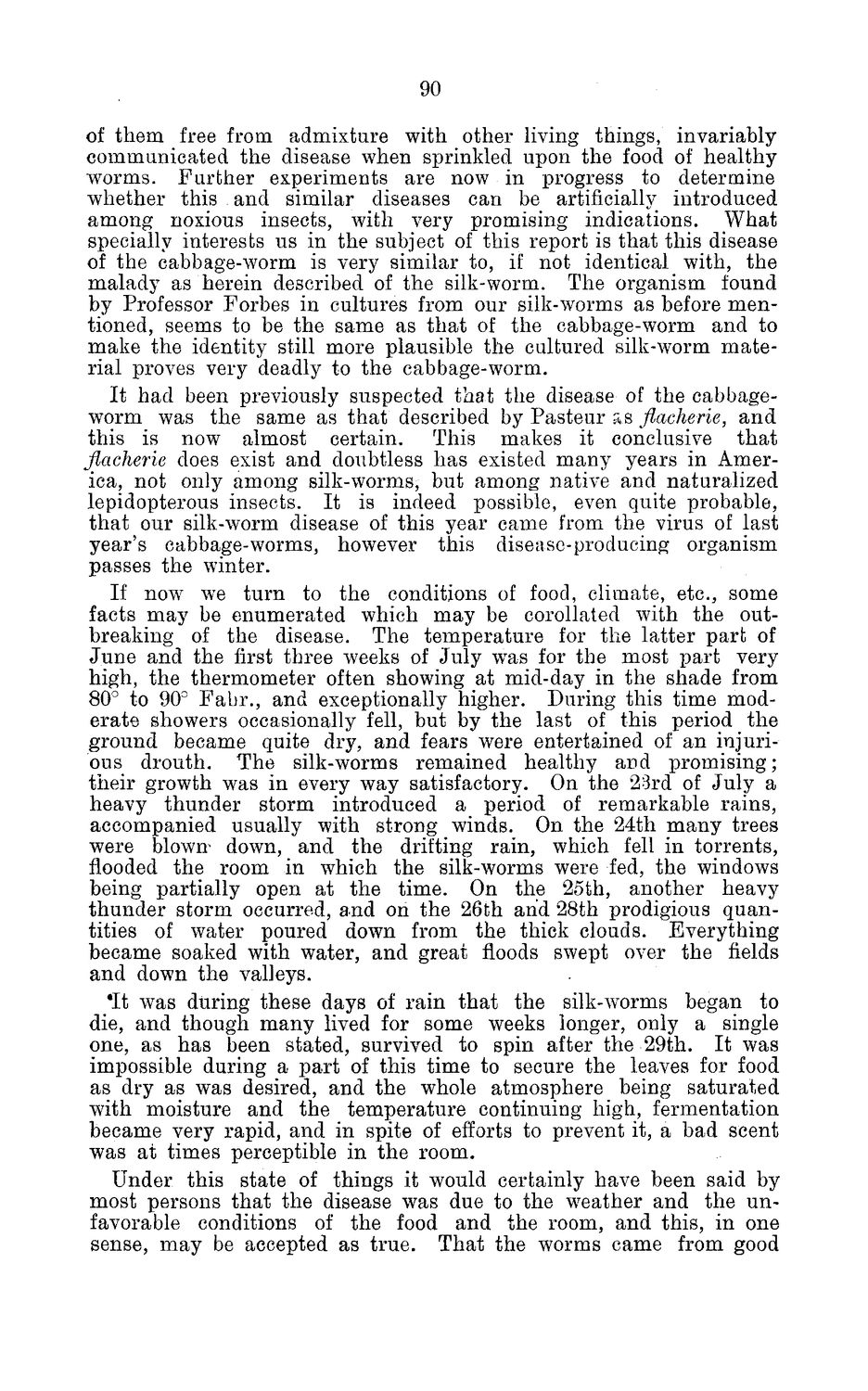| |
| |
Caption: Board of Trustees Minutes - 1884
This is a reduced-resolution page image for fast online browsing.

EXTRACTED TEXT FROM PAGE:
90 of them free from admixture with other living things, invariably communicated the disease when sprinkled upon the food of healthy worms. Further experiments are now in progress to determine whether this and similar diseases can be artificially introduced among noxious insects, with very promising indications. What specially interests us in the subject of this report is that this disease of the cabbage-worm is very similar to, if not identical with, the malady as herein described of the silk-worm. The organism found by Professor Forbes in cultures from our silk-worms as before mentioned, seems to be the same as that of the cabbage-worm and to make the identity still more plausible the cultured silk-worm material proves very deadly to the cabbage-worm. It had been previously suspected that the disease of the cabbageworm was the same as that described by Pasteur as flacherie, and this is now almost certain. This makes it conclusive that flacherie does exist and doubtless has existed many years in America, not only among silk-worms, but among native and naturalized lepidopterous insects. It is indeed possible, even quite probable, that our silk-worm disease of this year came from the virus of last year's cabbage-worms, however this disease-producing organism passes the winter. If now we turn to the conditions of food, climate, etc., some facts may be enumerated which may be corollated with the outbreaking of the disease. The temperature for the latter part of June and the first three weeks of July was for the most part very high, the thermometer often showing at mid-day in the shade from 80° to 90° Fabr., and exceptionally higher. During this time moderate showers occasionally fell, but by the last of this period the ground became quite dry, and fears were entertained of an injurious drouth. The silk-worms remained healthy and promising; their growth was in every way satisfactory. On the 23rd of July a heavy thunder storm introduced a period of remarkable rains, accompanied usually with strong winds. On the 24th many trees were blown* down, and the drifting rain, which fell in torrents, flooded the room in which the silk-worms were fed, the windows being partially open at the time. On the 25th, another heavy thunder storm occurred, and on the 26th and 28th prodigious quantities of water poured down from the thick clouds. Everything became soaked with water, and great floods swept over the fields and down the valleys. 'It was during these days of rain that the silk-worms began to die, and though many lived for some weeks longer, only a single one, as has been stated, survived to spin after the 29th. It was impossible during a part of this time to secure the leaves for food as dry as was desired, and the whole atmosphere being saturated with moisture and the temperature continuing high, fermentation became very rapid, and in spite of efforts to prevent it, a bad scent was at times perceptible in the room. Under this state of things it would certainly have been said by most persons that the disease was due to the weather and the unfavorable conditions of the food and the room, and this, in one sense, may be accepted as true. That the worms came from good
| |